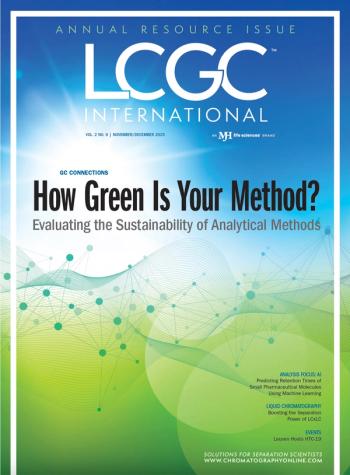
- The Column-09-12-2017
- Volume 13
- Issue 13
Metabolomic Pathway Analysis of Schizophrenic Brains
Researchers from the Japanese Institute of Neuroscience have identified differences in the low-molecular-weight metabolite profiles of the brains of schizophrenia patients using CE–TOF-MS.
Researchers from the Japanese Institute of Neuroscience, Tokyo, Japan, have identified differences in the low-molecular-weight metabolite profiles of the brains of schizophrenia patients using capillary electrophoresis time-of-flight mass spectrometry (CE–TOF-MS) (1).
Affecting more than 21 million people worldwide, schizophrenia is a complex mental disorder characterized by profound disruptions in thinking, affecting language, perceptions, and the sense of self (2). While effective treatments for schizophrenia exist, the causes of schizophrenia are still not entirely understood.
Morphological and functional alterations to specific brain regions have been suggested as a cause, with volume reductions in the frontal and temporal lobes of schizophrenia patients being supported by previous imaging studies (1). Previous metabolomic studies have also identified 10 metabolites that differ significantly in the brains of schizophrenics when compared to control brain samples. However, the specific alterations in the profiles of low-molecular-weight metabolites and the metabolic pathways that have been altered in the brains of schizophrenia patients are still poorly understood. To address this researchers used CE–TOF-MS to analyze frontal cortex and hippocampus brain samples from schizophrenia patients and compared these to controls.
In total, 294 metabolites were identified in the frontal cortex and 280 were identified in the hippocampus. Dipeptide glycylglycine was found to be significantly increased in both investigated regions. Pathway analysis led researchers to believe this significant increase may be a result of increased proteolysis within schizophrenic brains. Increased lactic acid levels were also found, which researchers believe indicates an altered glucose metabolism.
References
- T. Fujii et al., Schizophrenia Res.183, 70–74 (2017).
- http://www.who.int/mental_health/management/schizophrenia/en/
Articles in this issue
over 7 years ago
Vol 13 No 13 The Column September 12, 2017 Europe and Asia PDFover 8 years ago
Digital Watchover 8 years ago
Peak Scientific Announces SEKO Logistics Partnershipover 8 years ago
Recent Developments in Microchip Electrophoresisover 8 years ago
Vol 13 No 13 The Column September 12, 2017 North American PDFNewsletter
Join the global community of analytical scientists who trust LCGC for insights on the latest techniques, trends, and expert solutions in chromatography.



